St. Marys In Whitby
Religious Place In Whitby, North Yorkshire
A Norman Church with a quirky interior, sitting high and proud above Whitby with a paradigmatic gothic graveyard.
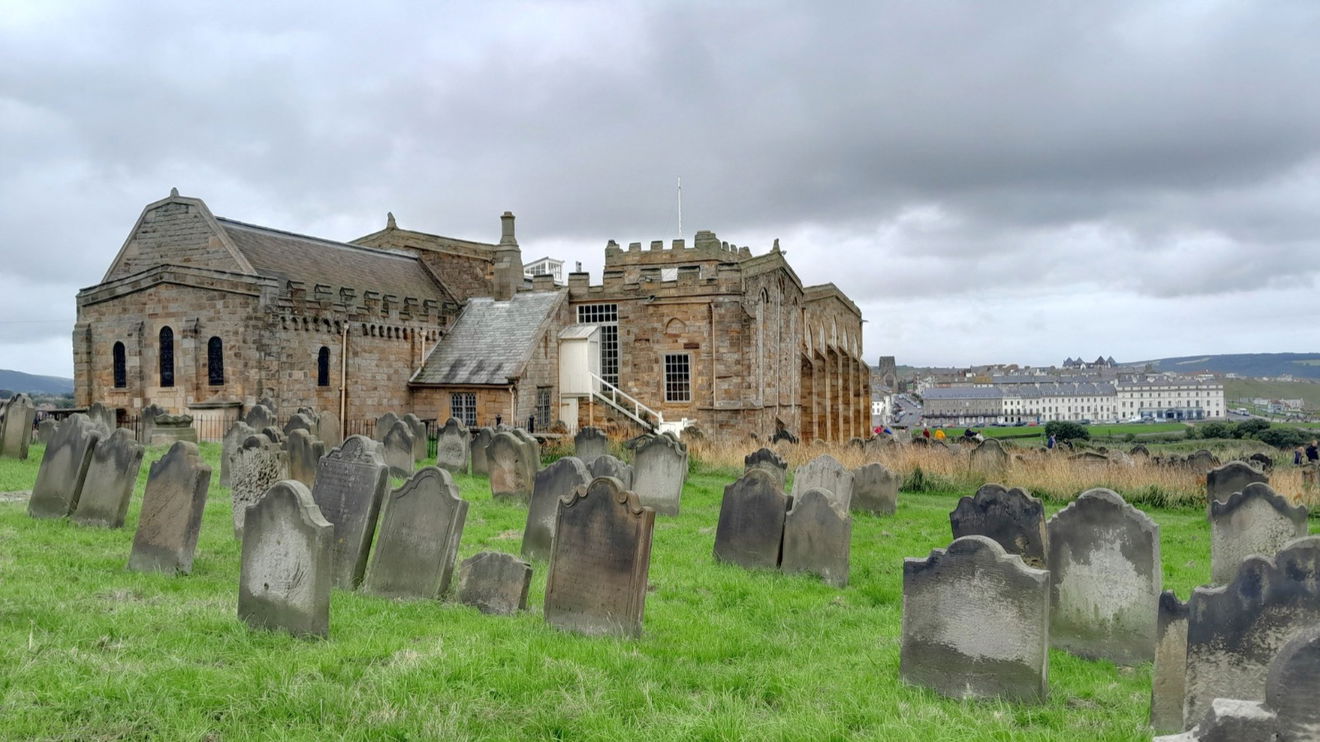
If you are visiting Whitby, then quite often St Mary's can easily be overshadowed by the imposing Whitby Abbey, with both church and abbey sitting high on the east side of the Esk River.
Much of this information has been kindly confirmed and expanded upon by Father Michael of St. Marys which I am most grateful.
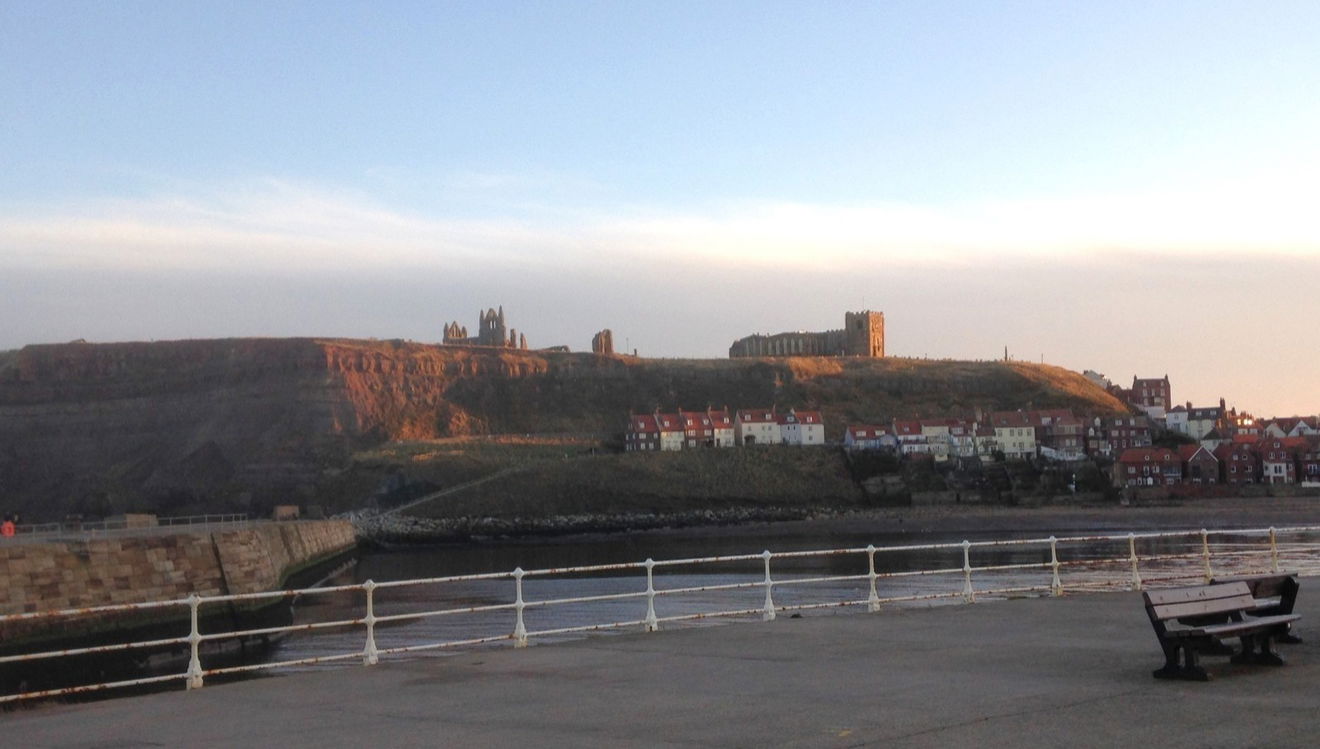
To get there you must fist tackle the 199 steps up the hill which leads to Saint Mary's Church and Whitby Abbey. I will not be mentioning Dracula here as this church is still very much alive, although I have though covered Bram Stoker's gothic tale in the post for the 199 steps.
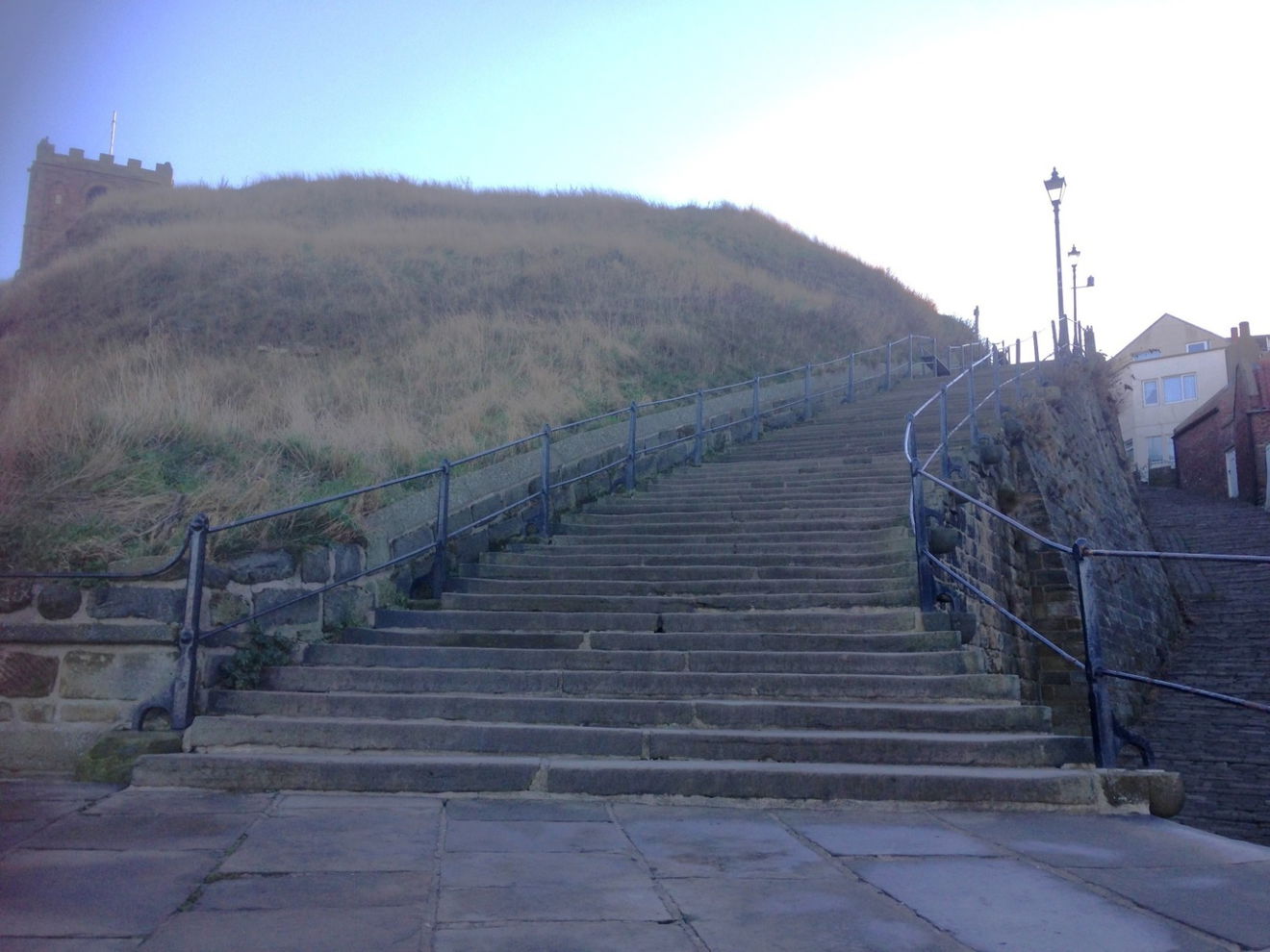
Saint Mary's Church building dates to circa 1110 and outside it is decidedly Norman, it actually predates the Abbey remains. The pillars of the west door where you walk in and out date to this and so do parts of the north and south walls.
The chancel is the oldest part and was restored in 1905. The tower was built in 3 stages around 1170, originally a lot taller and reduced in the 17th century as thought to be unsafe.


The north and south transepts were added in about 1225 and 1380 respectively, so the church then became cruciform in plan and was not changed until the 19th century.
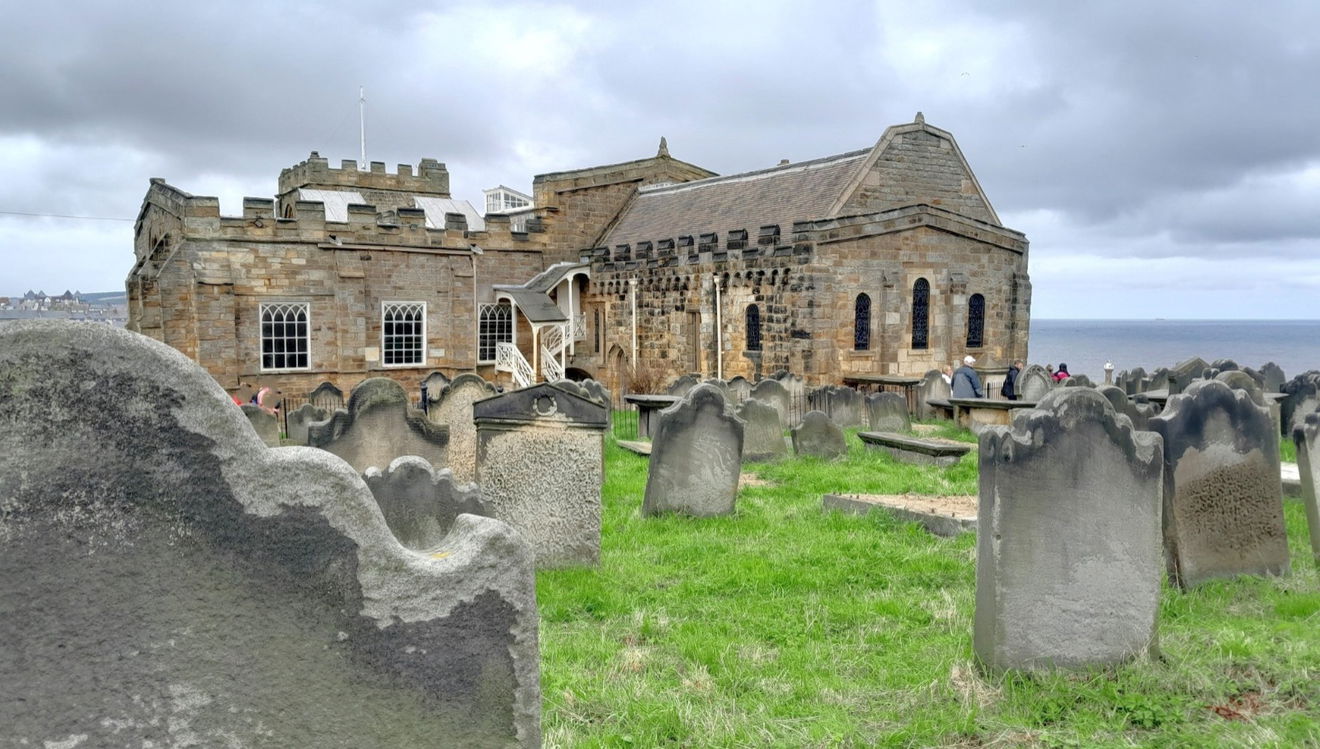
In the 14th and 15th centuries, windows were altered and buttresses added to the transepts on the outside.
The squint (technically called a Hagioscope) fascinated me. It was created so that some of the congregation could see the high altar. There would have been a rood screen across the chancel.


Castellations were added to the roofline in the 16th Century
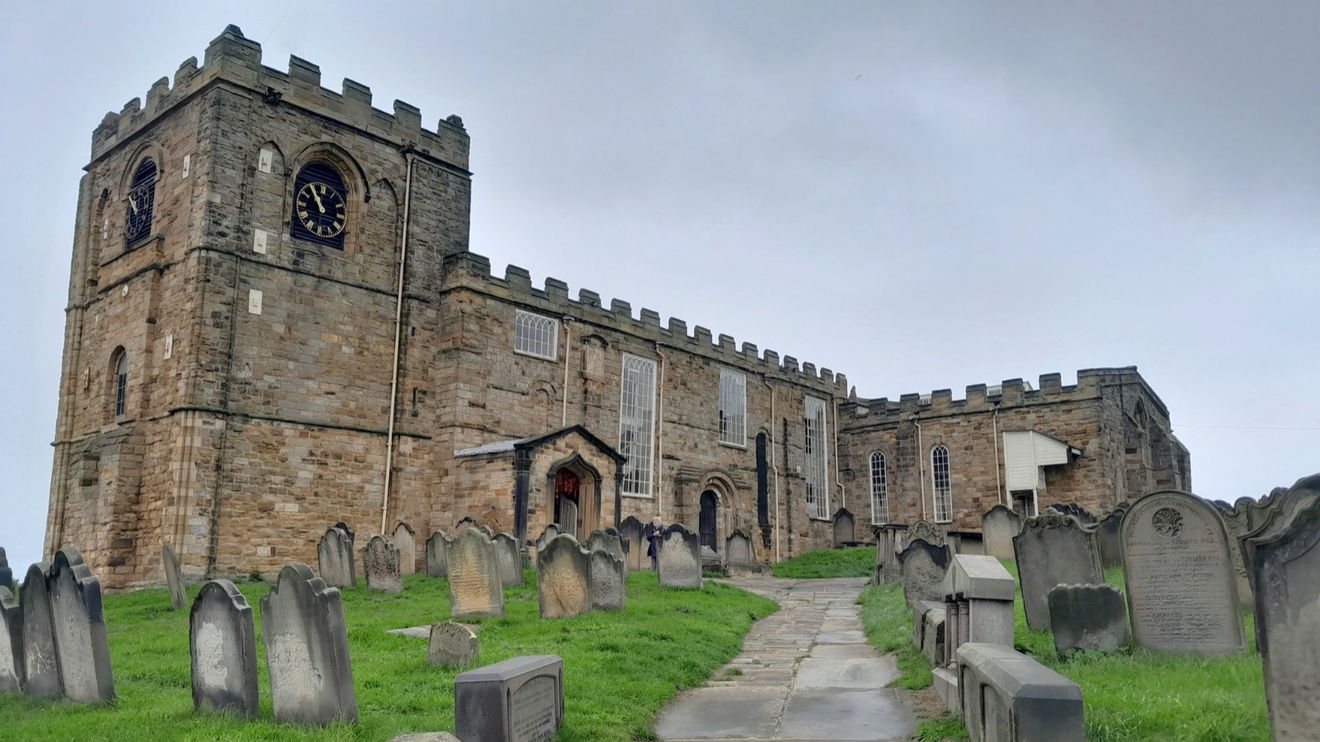
The communion table is of plain oak and possibly dates to the Elizabethan period (1558-1603).
It is a drawing-out table where there are slots at each end to extend it after it has been carried through to the nave for Holy Communion.

The roof was altered in 1612 by ship carpenters and it has a ship-like feel.
Around this time the bigwig Cholmley family (who owned the ruined Abbey) had installed a first-floor pew/gallery in front of the Chancel. Look at those barley sugar columns!
The clock on the front of it dates to about 1770. The Royal coat of arms was to show allegiance to the crown and is dated 1840


Another gallery was erected in 1697 for the public. More were added in the 18th century, along with stairs to them built on the outside of the Church which can hold 1861 (To be precise) attendees.
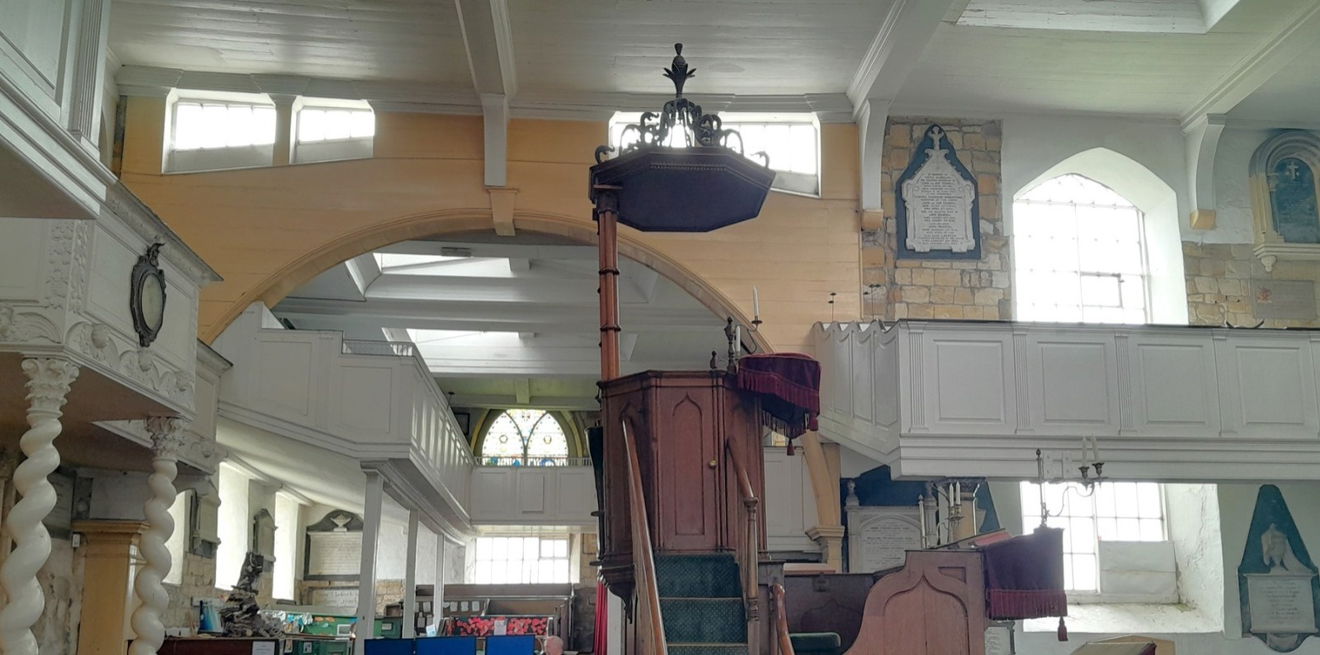


There is a coat of arms dated 1764 on the west end of the Nave (There is an ear trumpet above it, which all will be revealed about it in a bit).
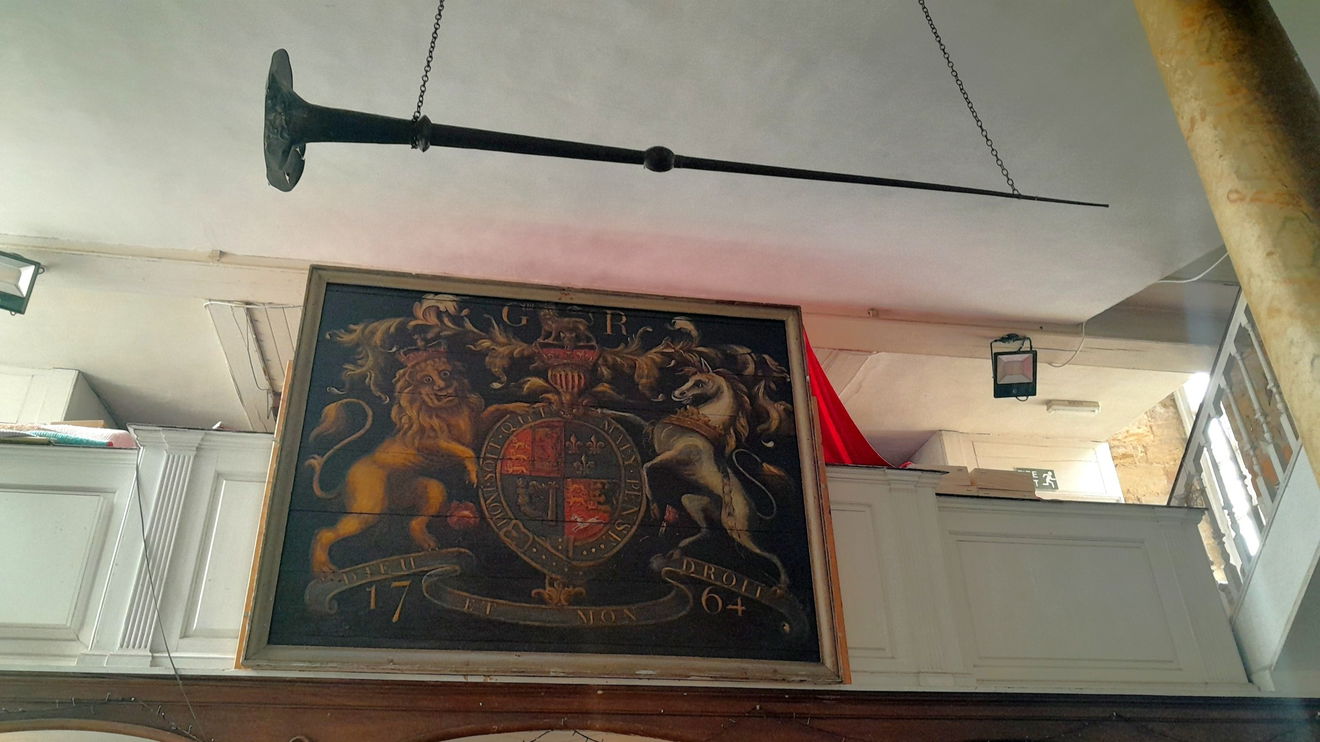
The chandelier was purchased by subscription in 1769. It is splendid sight alight with candles at major services. There are other candles around as the nave does not have electricity. This must add to the ambiance.


Amongst the many notable pieces of furniture are the box pews. Most of these are dated to the 19th century. However, the one that is covered dates to the Jacobean period of 1603 to 1625.
You may notice that some are 'Free' and a few are 'For Strangers'. These tend to be of a higher specification as you never know if wealthy bods may be visiting and you must give a good impression. They may then patronise the Church.


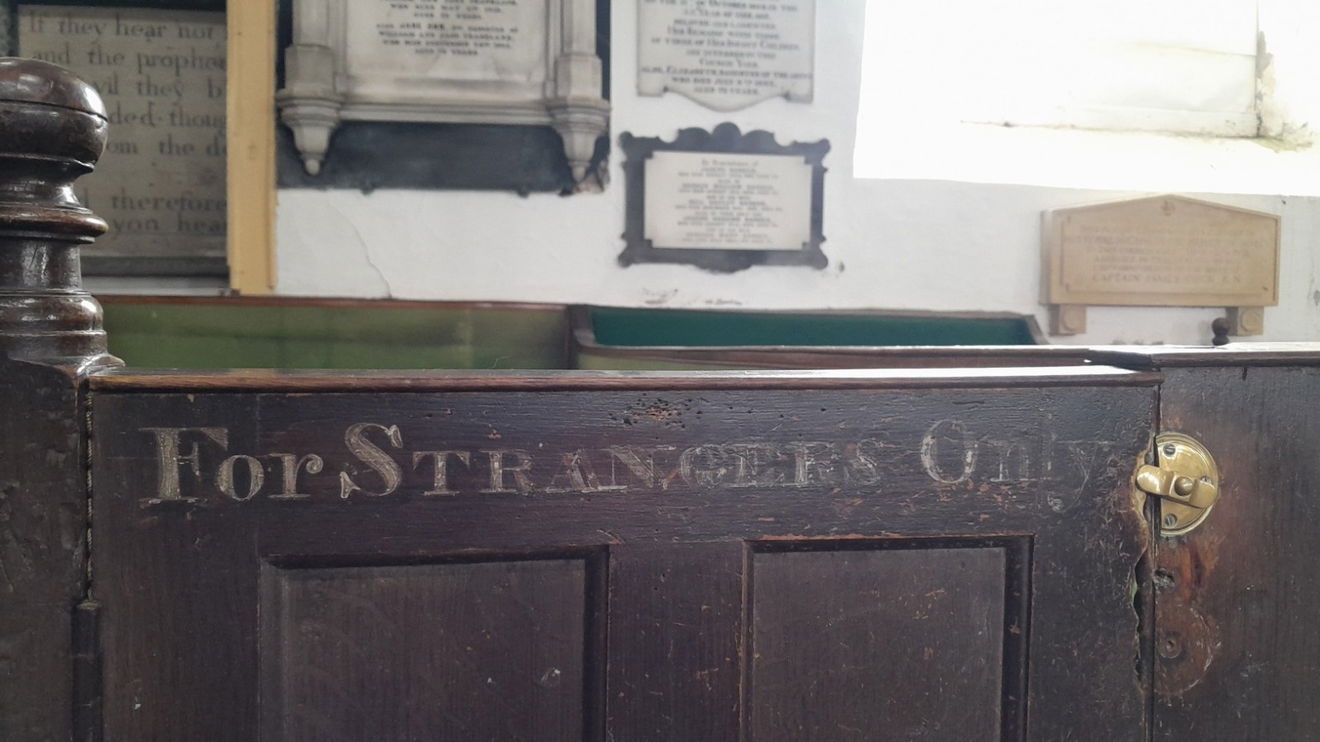
There are very few signs of Anglo-Saxons (Mid 5th century to 1066) here. The only remains found was an infant's coffin.
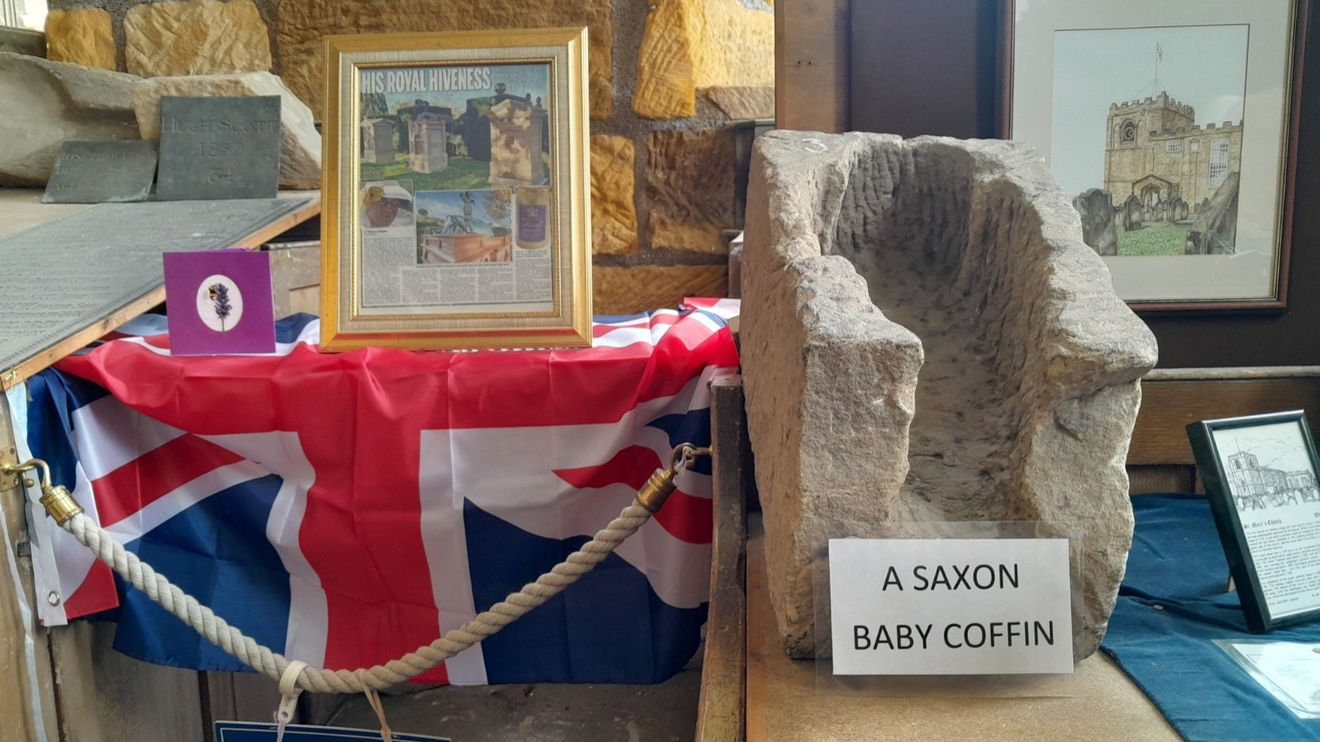
You cannot miss the 3 tiered pulpit. It was built in 1778, moved and modernised in 1847.


The Rector of 1843 James Andrew, installed two large ear trumpets as his wife was deaf. She sat below the pulpit and connected tubes to her ears from the trumpets.


The Scoresby chair is interesting (the sign gives the information).
William Scoresby (1789 - 1857) is known as an Artic explorer and was before the time of Falcon Scott of the Antarctic. His father (Also William) invented the Crow's Nest. Scoresby Jr. was a scientist too and was especially known for his work with magnetism.


The ceilings over the nave have several 'skylights' which is unusual in churches.
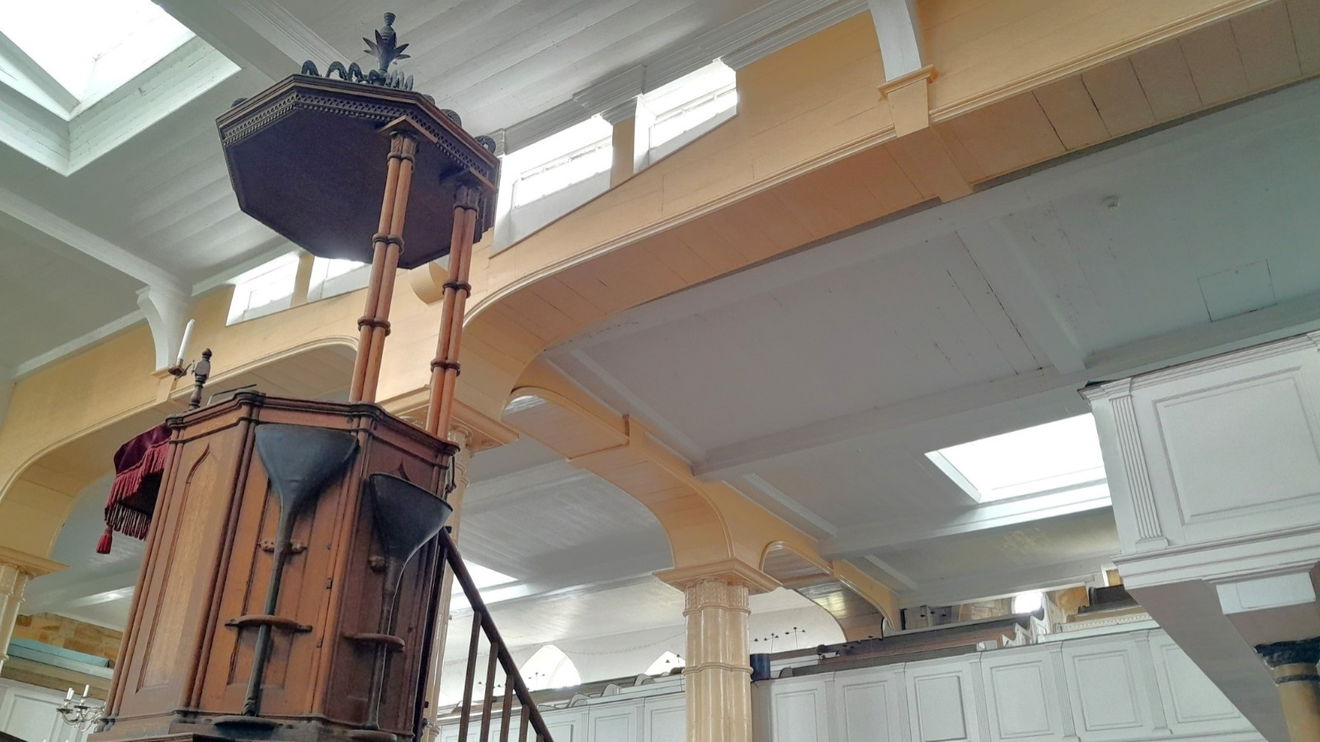
In the 19th century they decided to bolt on a bit on the side of the North Transept, therefore ruining the layout in the form of a cross.
Mostly though the Victorians did not alter the church.
Weather-beaten gravestones greet you outside with the oldest dated to the 1600s. The graveyard closed to burials in 1862 apart from two distinguished rectors.


You should see an 1898 stone cross dedicated to 7th century Caedmon. He is the first known (by name) English poet and it is said 'He fell asleep hard by A.D 680.'
There have been many finds and these are displayed around the church, grave covers in particular. The chest and wooden war memorials are worth looking at.
Unfortunately, there have been some landslides and sometimes graves have collapsed onto the beach below. I meet a retired warden of the church a few years ago and it was part of his duties to go and collect the remains. And they would be interned again.
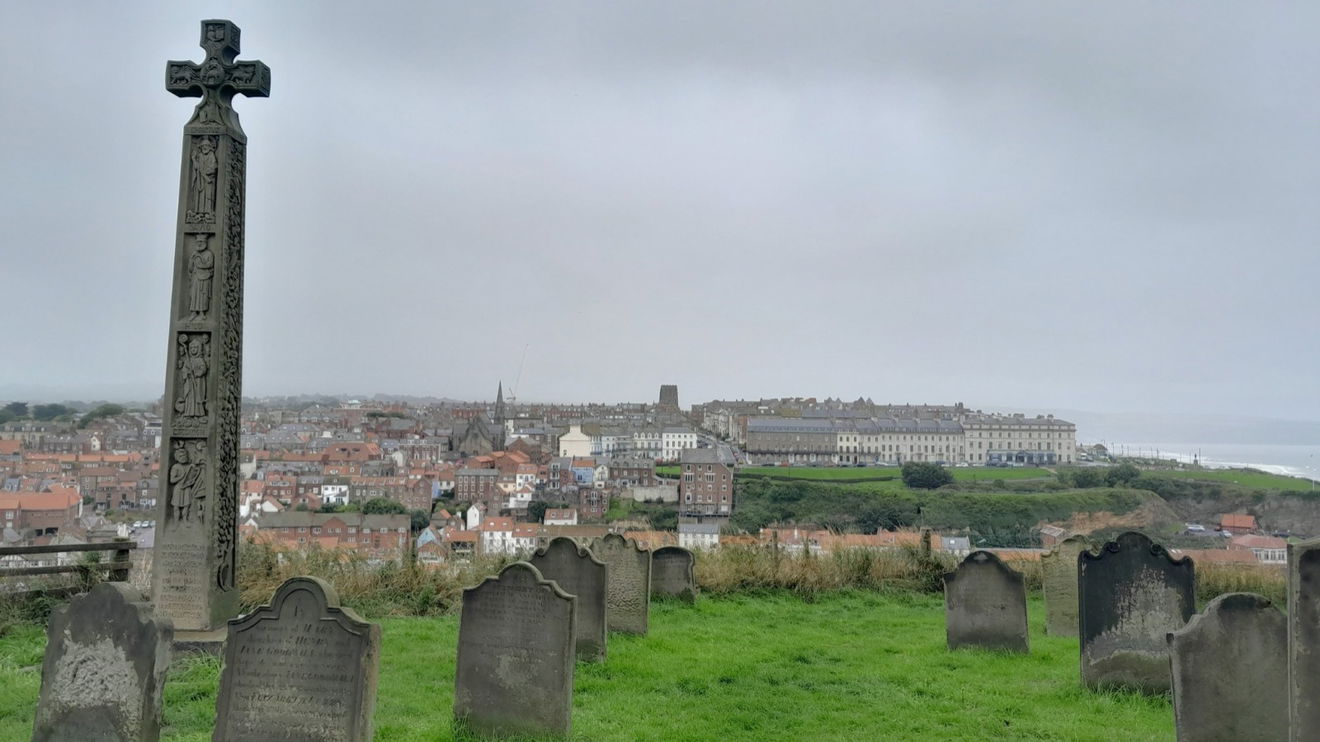
In 664AD there was a synod of Whitby to decide whether to use the Celtic or the Roman Catholic method for determining Easter. Roman Catholics won. Whitby Abbey has more details of this historical period.


There is a strong seafaring connection in Whitby. Since Vikings, there has been fishing.
In the 18th century, it became important for shipbuilding and whaling. James Cook (1728 - 1779) the Explorer, a Naval officer and Cartographer, attended the services at the Church as he was an apprentice in the town.
On the west side of the River Esk there is a statue of him near the Whale bones.
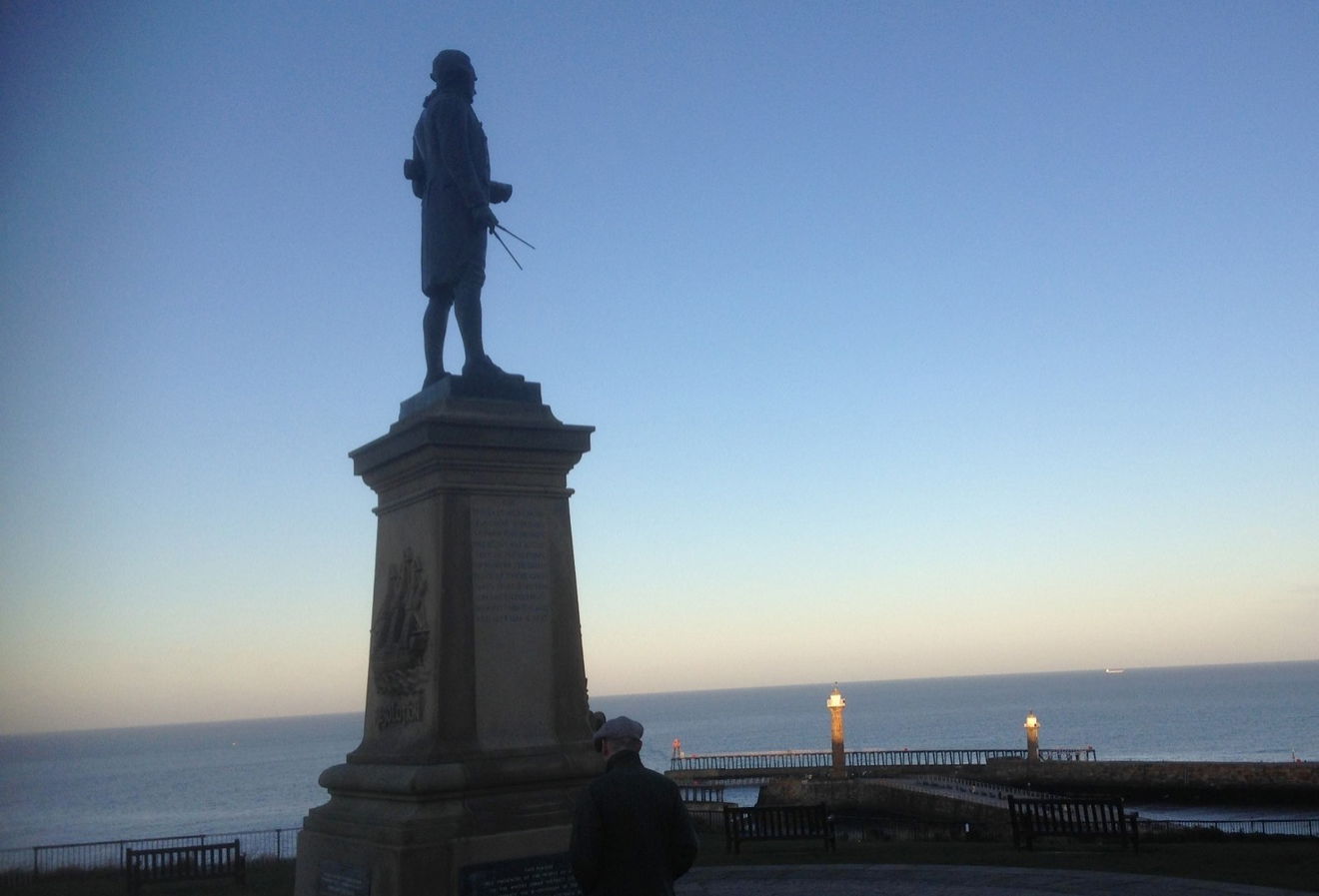
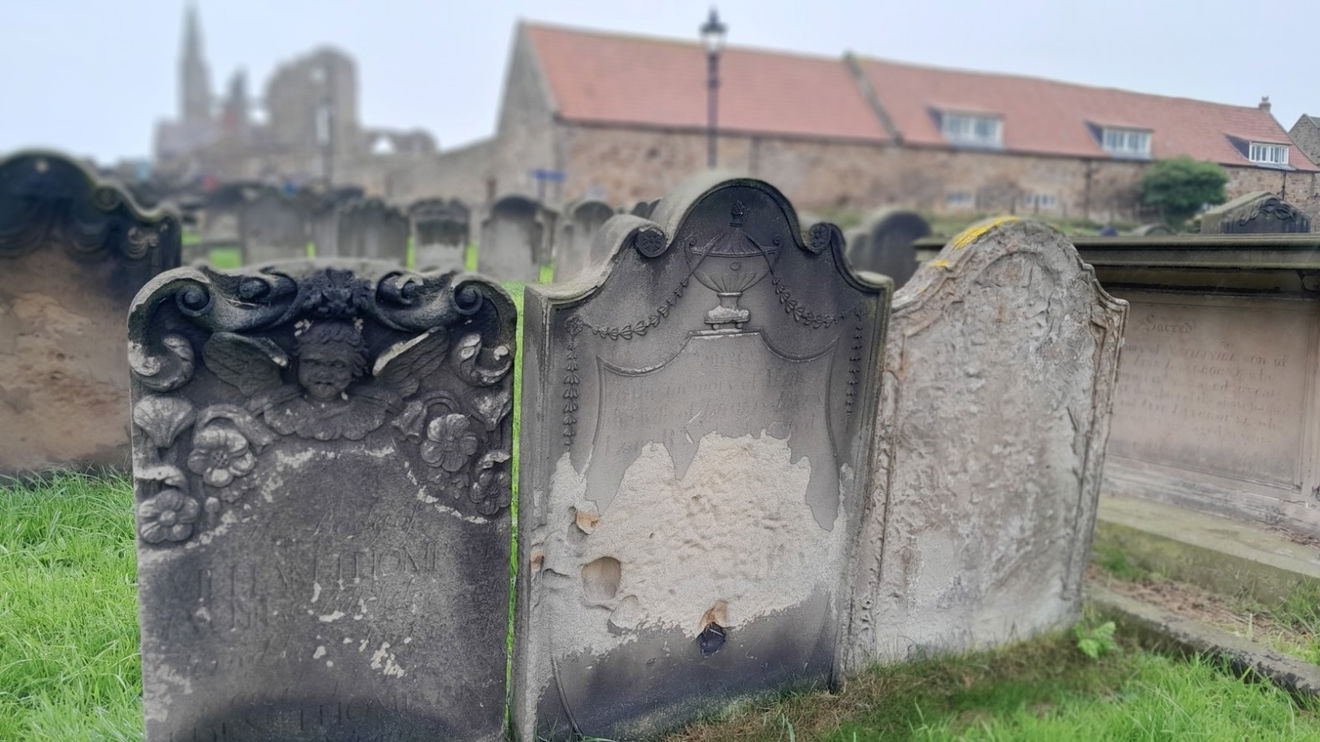
Both church and abbey overlook the North Sea, and the buildings show the relationship between the harsh northerly winds that will bring storms. It is indeed a photographer's gothic dreamscape.
A pleasant alternative walk back down to the town can be found around the back of The Abbey which leads to the footpath of Caedmons Trod, past the Donkey Field, through Greens Yard out to Church Street.
Get 2 points if you have visited this place. Already visited by 294 VIPs.
Login to the VIP area to add places to your bucket list, mark them as visited and more importantly see where you rank on the league table.
How To Find St. Marys Church Whitby
Where Is St. Marys Church Whitby?
Lat / Long
54.488963, -0.609897
What three words
Where To Park For St. Marys Church Whitby?
Lat / Long
54.482414, -0.612959
What three words
Parking will be tricky during peak season due to the volume of people that visit. There is the English Heritage carpark at the top of Abbey Lane. There are several carparks near the marina, along Langbourne Road. Bear in mind this is a dead-end road so the area can get busy. Marina Back carpark is probably the least used as you pass others to get to it.
Contributed by Rosalind Parker
Thank you for reading. I hope it sparks your interest. It’s always a pleasure to get out and explore, whatever the weather. I enjoy uncovering little snippets of information, especially when they’re obscure, amusing, or meaningful. All photos were taken on a mobile phone.
More Places from Rosalind
More Places In Whitby
Find more fabulous places in Whitby, North Yorkshire and if you know of a place we haven't listed, then let us know.
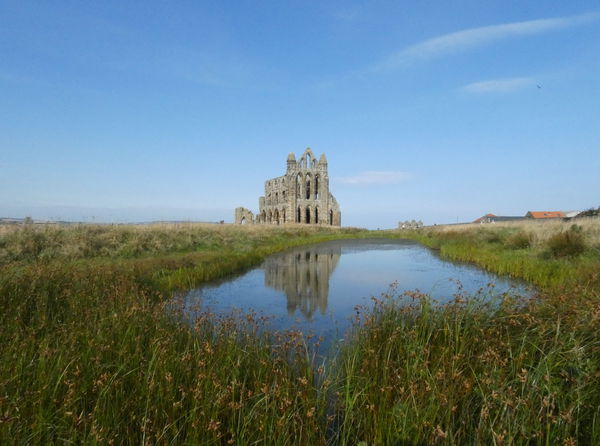
Whitby Abbey
Religious Place Whitby North YorkshireThe ruins of a 7th Century Christian Monastery which later became a Benedictine Abbey overlooking the north sea and town of Whitby. Famous for featuring in Bram Stoker's Dracula.

Captain Cook Memorial
Statue Whitby North YorkshireA statue to commemorate the 18th-century explorer and navigator who changed the western perceptions of world geography.

Crows Nest Whitby
Art Whitby North YorkshireNo murder of Corvids, but a navigational aid for ships.
More Religious Places
So this religious place wasn't enough and you want more? Don't worry we have you covered.
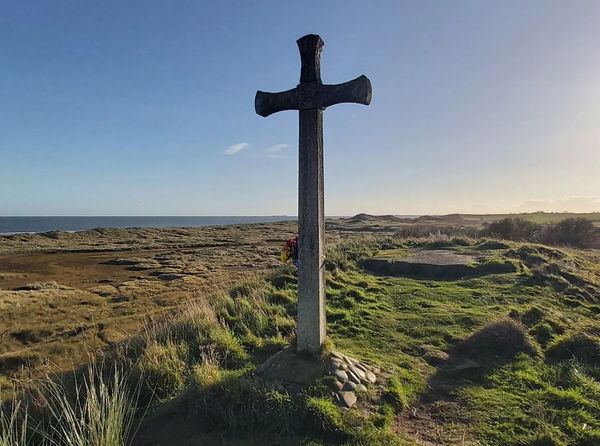
St Cuthbert's Cross
Religious Place Alnmouth NorthumberlandSaid to be the location where St Cuthbert agreed to become Bishop of Lindisfarne when petitioned by the king.
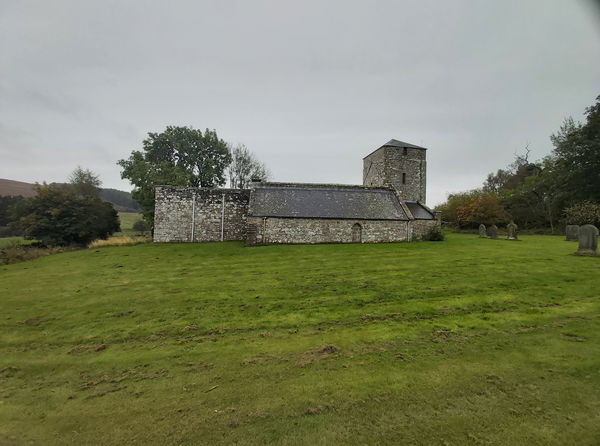
St John The Baptist Church Edlingham
Religious Place Edlingham NorthumberlandA small saxon church built on the site of an old 8th century church near Edlingham Castle.

The Church of Our Lady
Religious Place Seaton Valley NorthumberlandA delightful 12th-century church tucked away beside the magnificent Seaton Delaval Hall.
Never Miss A Fabulous Place
If you are afraid of missing out on all the fabulous places we post, or just want to be the first to know, then sign up to the Fabulous North.
Each week we will email you all the brand new places that we visit.
Sign Up To AlertsFind Us On Facebook
We post all our new places daily on our Facebook Groups page, so join the group today and be notified when we add a new place.
Join Our Facebook GroupSt. Marys Church Whitby was listed in Religious Place // North Yorkshire // Whitby

